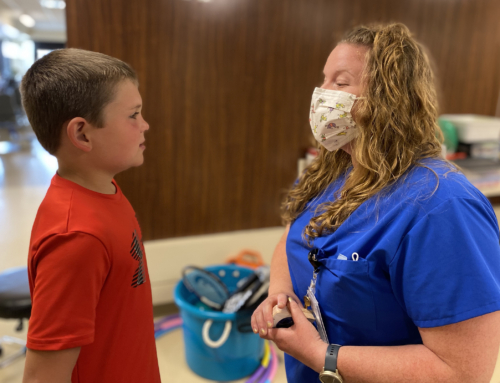Nothing is better than enjoying the outdoors as a family. Don’t let bugs and critters ruin your hike or camping trip. Follow this advice to soothe bee stings, avoid ticks and know how to best react to a rattlesnake bite.
Soothing bee stings
If your child is bit the area will likely get red, painful and even swell—or much worse, cause a threatening allergic reaction in a handful of kids (only 1 – 3%).
Most stings are not dangerous, just bothersome. If your child does have swelling beyond the bite area, sounds horse, is itchy all over or has trouble breathing get medical attention immediately.
Mild reactions are most common. The first thing to do is wash the area with soap and water then ice it and elevate it. If the stinger is still there you can remove it first with a tweezers or brush it off with a credit card.
Those sneaky ticks
Colorado tick fever is the one to worry about. It’s a virus spread by a wood tick that causes serious fevers. Symptoms set in after 3 to 6 days of the bite and include fever, nausea, vomiting, chills and headache. It’s not pleasant but most people make a full recovery after a week or two.
Your best defense is to stay out of grassy, wooded areas with heavy undergrowth, and use DEET. Spray your shoes, socks and clothing if you are in a grassy area. The CDC estimates that up to 15% of campers are exposed to ticks that carry Colorado Tick Fever, with most cases from April through July.
Be smart when removing ticks. No matches needed! Use a tweezers to grab the back of its head and apply slow but steady traction to back it out. Then clean the area.
Rattlers! Oh my!
Yet it’s still a good idea to stick to the path rather than bushwhack. Rattlers like grassy areas, stream crossings and rocky outcroppings. They may den in prairie dog burrows, caves and crevices. Encourage your curious kids to resist the urge of reaching in to cracks in the rocks.
If the rare does happen, don’t fall victim of old movie tricks. There’s a lot of folklore around how to treat a snakebite. One old idea was to suck the poison out, but that’s no longer recommended. The current treatment regimen is to clean the wound and immobilize it. If you can, carry your child out. The more they move the more the poison will distribute around the body. Keep the bitten area below the level of the heart to minimize blood flow.
Call 911 so they are able to meet you as soon as you get near a road or all the way to you if carrying is not an option. If you have cell reception, also call poison control at 1-800-221-2222. Most importantly, stay calm and don’t run. Now that you know what to do with outdoor hazards, get out and enjoy the wild!




![Well-child checks vs. sports physicals — what’s the difference? [INFOGRAPHIC]](https://memorialregionalhealth.com/wp-content/uploads/Well-Child-Checks-vs.-Sports-Physicals-Image-500x383.jpg)
